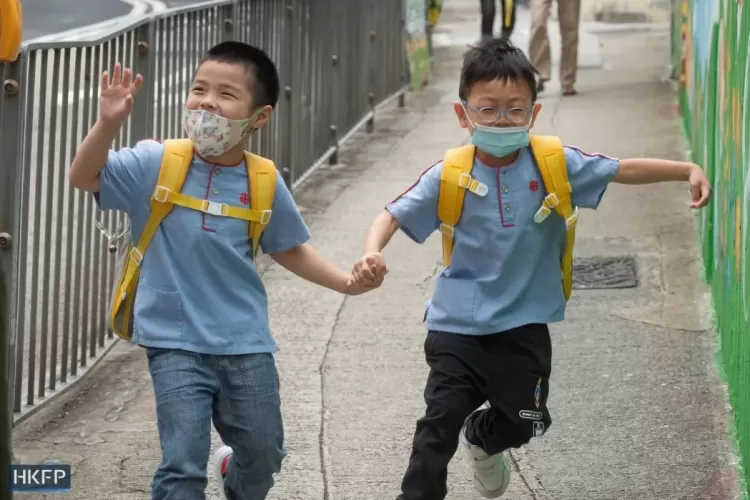Hong Kong’s Record Low Birth Rate Leaves Kindergartens Struggling for Survival
A sharp decline in Hong Kong's birth rate has led to the closure of many kindergartens, with 40% of them expected to shut down by the end of this year. What’s behind this crisis, and what solutions are being proposed to help preserve early childhood education in the region?

The Impact of a Plummeting Birth Rate
Hong Kong's education sector is facing a critical challenge as the city grapples with one of its lowest birth rates in recorded history. The aftermath of this demographic shift has been most keenly felt in the early childhood education sector, where kindergartens are struggling to survive. According to reports, by the end of 2025, around 40% of kindergartens in Hong Kong are expected to shut down, a direct consequence of a significant drop in the number of births over the past few years.
In 2022 and 2023, the number of births in Hong Kong fell by an alarming 40% compared to previous years, driven in part by the societal effects of social unrest and the ongoing pandemic. This sharp decline in the birth rate has directly impacted the number of children enrolling in kindergartens, leaving many educational institutions facing severe financial strain and forced to make difficult decisions regarding their future.
School Closures and Survival Strategies
The Hong Kong Education Bureau has forecasted that at least 10 kindergartens will cease operations by the end of the current school year. This is a notable increase compared to the previous year when 11 preschools shut down, and just five new ones registered. The school operators have expressed their concerns, with many citing the drop in student enrollment as the primary reason for their closures.
To combat the effects of the low birth rate, many kindergarten operators are looking for ways to stay afloat. Some have turned to campus relocation as a potential solution, hoping that a fresh location might attract new families. In addition, preschool and school sponsoring bodies are ramping up promotional campaigns aimed at encouraging parents to send their children to kindergarten, but these efforts have been met with limited success.
The situation is further complicated by the rise of private, independent preschools in Hong Kong, which offer advanced curriculums that have garnered strong demand from parents. These institutions, often viewed as providing higher-quality education, have siphoned away enrollment from public and subsidized kindergartens. In response, many of the public preschools are urging the government to grant them more flexibility in designing their curricula, particularly by allowing them to implement more advanced programs similar to those offered by their private counterparts.
Government Solutions and Challenges
The Hong Kong government has acknowledged the issue of kindergarten closures and the ongoing challenges posed by the low birth rate. However, the solutions offered thus far have been limited. The suggestion of campus relocation has been proposed as a way for kindergartens to adapt, but this strategy is far from guaranteed to save them from closure. Moreover, the government has yet to implement meaningful policies that would directly address the demographic decline or significantly support the educational institutions that are facing the hardest hit.
While private institutions continue to thrive, public kindergartens are left struggling with fewer resources and a shrinking pool of students. The need for more government support is evident, as school operators demand more flexibility to design their own courses and attract more students. Without such changes, many of the more traditional and publicly funded kindergartens may continue to close at a rapid rate, further deepening the crisis in early childhood education.
The Broader Consequences of a Low Birth Rate
The implications of Hong Kong’s low birth rate extend beyond the education sector. With fewer children being born, the overall demographic structure of the region is shifting, leading to concerns about the future labor force and economic productivity. Fewer young people means fewer workers in the coming decades, potentially exacerbating issues such as an aging population and workforce shortages.
In the context of Hong Kong’s education system, the closure of kindergartens not only impacts the children who miss out on early childhood education but also the families who may no longer have access to affordable schooling options. Additionally, the growing disparity between private and public kindergartens may lead to further social stratification, with wealthier families continuing to have access to high-quality education, while lower-income families are left with fewer choices.
What Can Be Done?
The crisis facing Hong Kong's kindergartens calls for urgent and strategic intervention from the government. While short-term solutions such as campus relocation and promotional campaigns might offer some relief, the underlying issue of the birth rate decline needs to be addressed through broader societal and policy changes.
One approach could involve incentivizing families to have more children, through tax benefits, direct subsidies, and other supportive measures. Furthermore, the government should provide more substantial funding and support to public kindergartens to help them adapt to the changing educational landscape. Giving kindergartens more flexibility to design their own curricula, as requested by many operators, could also help them remain competitive in an increasingly crowded educational market.
In addition, efforts to better integrate early childhood education with primary and secondary schooling could help reduce the long-term impact of the current crisis. Ensuring that children who attend subsidized kindergartens receive the same high-quality education as those in private institutions could help level the playing field for all families, regardless of income.
The Road Ahead for Hong Kong’s Education System
Hong Kong’s kindergartens are at a crossroads, and the challenges posed by a plummeting birth rate are putting pressure on the entire education system. As closures loom and many kindergartens struggle to stay afloat, the need for government intervention has never been more urgent.
While some steps, such as campus relocation and increased flexibility in curriculum design, may provide temporary relief, the long-term solution lies in addressing the root cause of the crisis: Hong Kong's demographic decline. With the right policy changes and increased support for early childhood education, Hong Kong can weather this storm and ensure that its youngest citizens continue to have access to quality education—regardless of the challenges ahead.
What's Your Reaction?
















